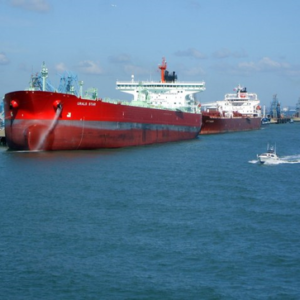-
Low-emissions shipping to rapidly expand over next five years, though there are concerns insufficient fuel will be available
Date posted:
-
-
-
Post Author
Patrick LaveryCombustion Industry News Editor
-
-

Reuters has looked at how net-zero shipping is shaping up, after A.P. Moller-Maersk sailed its first green methanol-fuelled container ship, departing from South Korea, in July.
While the number of methanol-fuelled ships is expected to be 30 by the end of this year, by 2028 that number is to rise to around 200, according to consultancy DNV. Finding enough green methanol for these ships is expected to be a problem, with current production capabilities for biomethanol limited to around 300,000-400,000 tonnes per year, and a 16,000 twenty-foot equivalent container ship using 30,000-40,000 tonnes per year.
Without a rapid scaling up in green methanol production – which would need to be at 15-20 times current production to fuel all 200 methanol-fuelled ships by 2028 – such ships will instead use conventional methanol, and thus not be close to low emissions. The Methanol Institute is currently tracking 90 projects that will eventually produce either biomethanol or green synthetic e-methanol, with a total anticipated production capacity of 8 million tonnes by 2028. This would appear to meet global demand by that date if all projects were to go ahead, particularly as plant sizes currently around 4,000-10,000 tonnes per annum, are now being planned at 50,000-250,000 tpa.
One logistical challenge is that most new production sites will be in China, Europe, or North America, a distance removed from the existing major bunker hubs of United Arab Emirates and Singapore. Additionally, there is also the consideration of cost, with ultra-low emissions methanol around twice the price of conventional methanol; that price disparity is expected to reduce as economies of scale are reached, and Maersk for one is confident that at least some of its clients will be happy to pay the higher rate. All together, the decarbonisation of shipping seems promising, if challenging.
Reuters’ analysis comes at the same time that the world’s first modern cargo ship began sailing partly powered by ‘sails’. Made from the same material as wind turbines, the 37.5 metre tall sails contribute to the powering of the ship, although the majority of power still comes from liquid fuels. It is expected that with improvements in the technology, such sails could reduce greenhouse gas emissions by 30% compared to conventional shipping.
